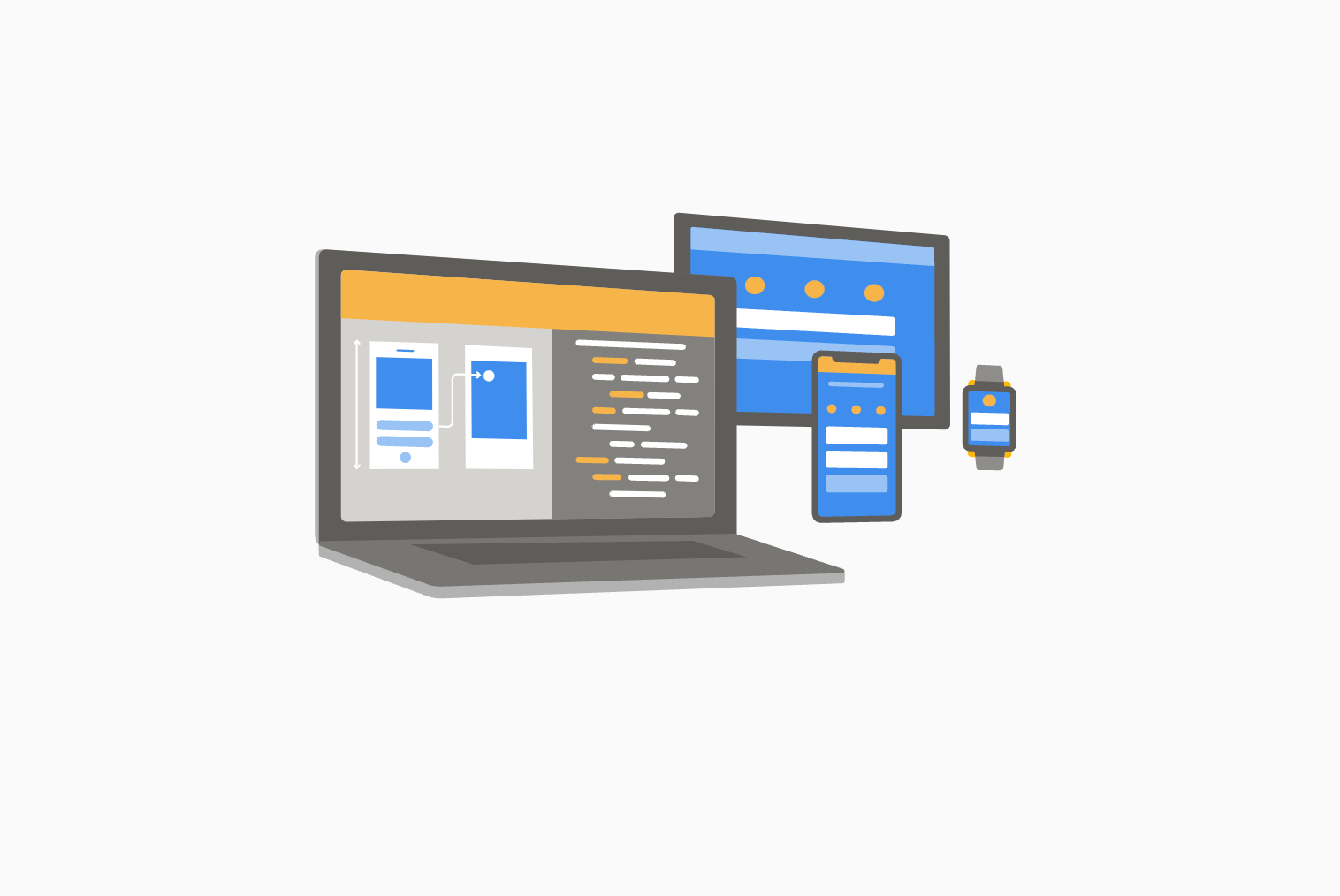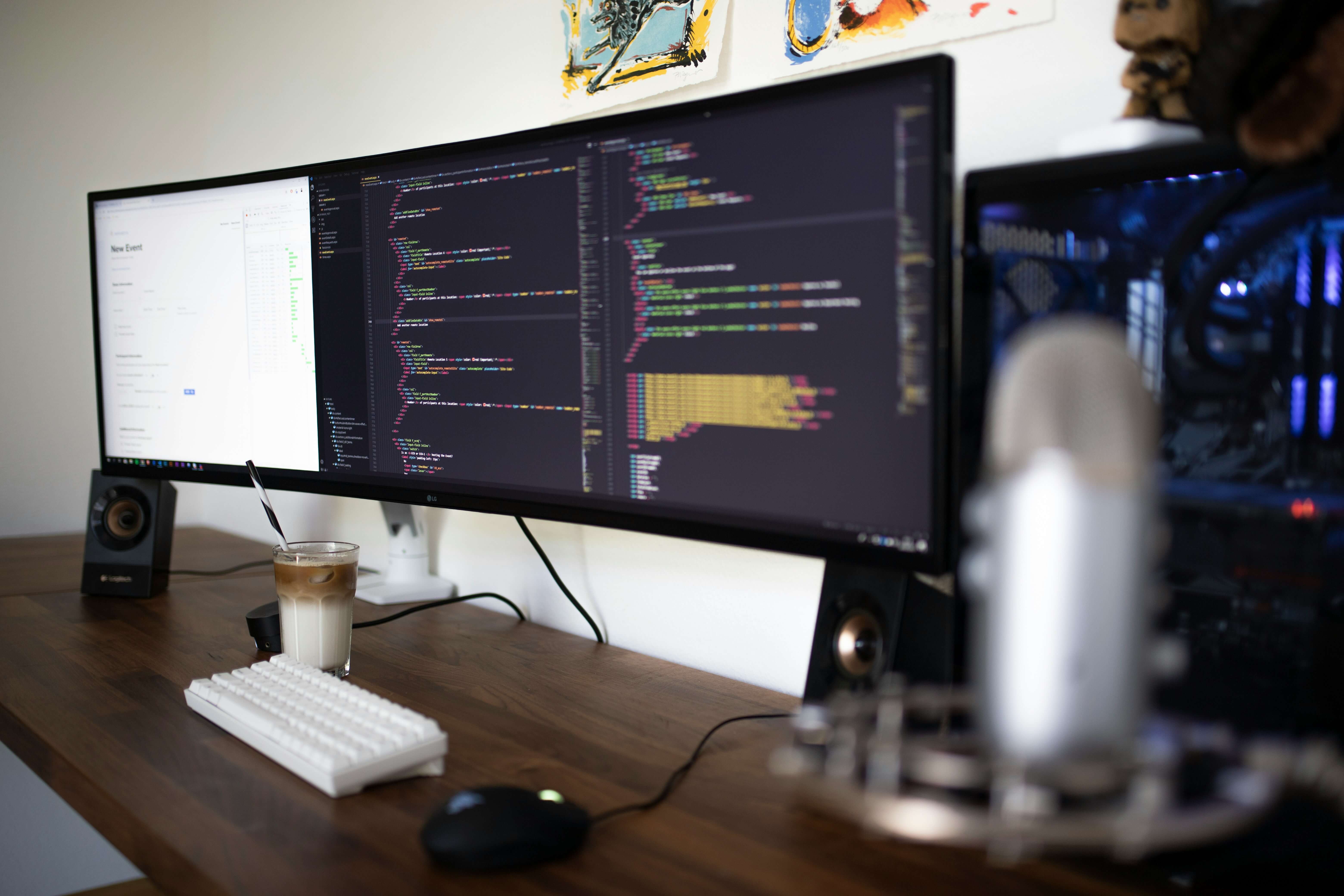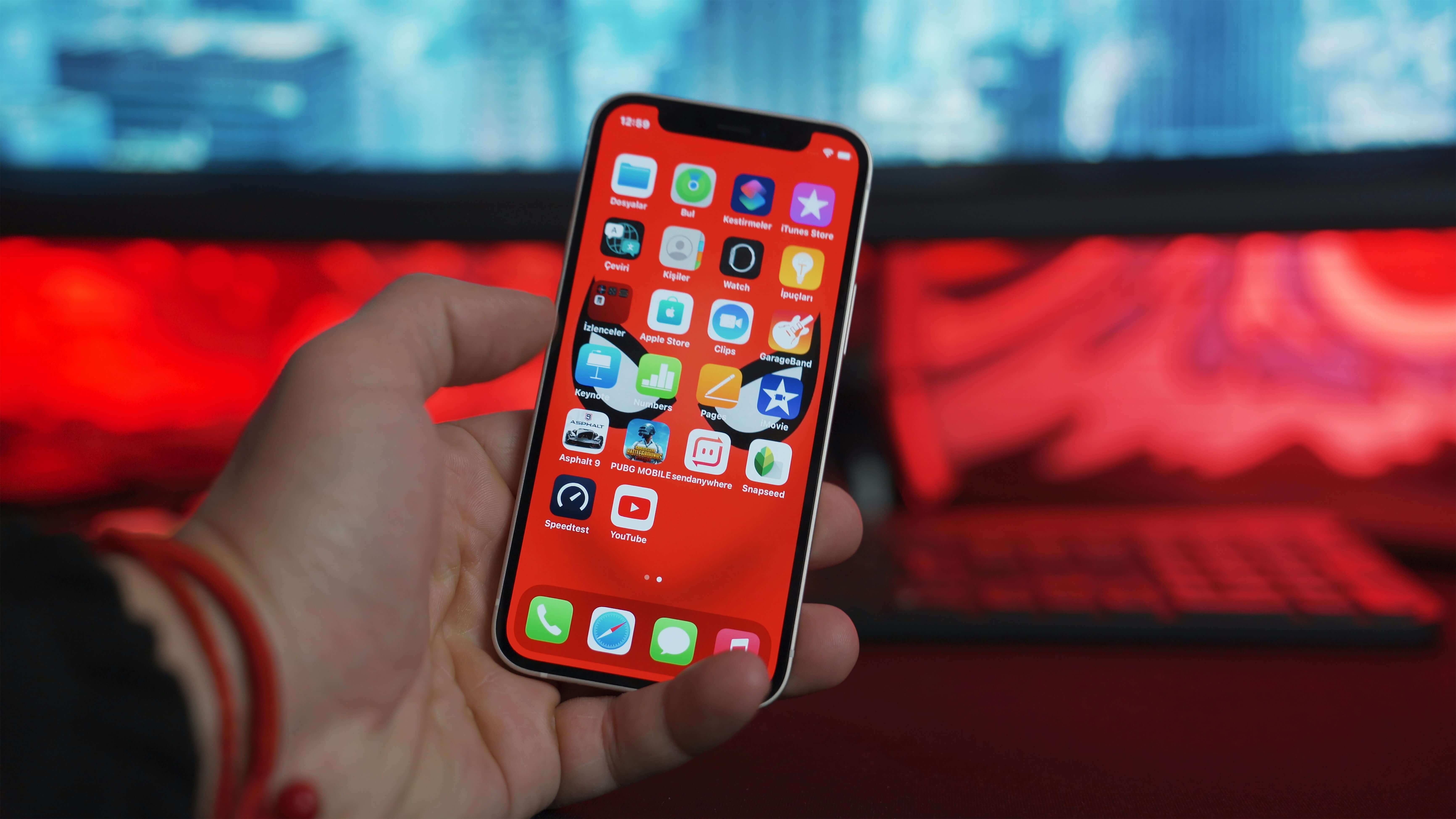Flutter vs Xamarin - Which Is Best For App Development?
Though they’re both used to build mobile apps - Flutter and Xamarin are very different technologies.
Choosing between them for your project requires deep knowledge of their key strengths and drawbacks, as well as your own specific requirements.
Here at MobiLoud, we’ve built thousands of iOS and Android apps for businesses ranging from side project startups to multibillion dollar household names. We’ve had to stay at the cutting edge of mobile tech, and have formed some strong opinions over the years.
In this article we’re going to teach you what you need to know about Flutter and Xamarin. We’ll introduce both, break down their pros and cons, and guide you through your decision.
First off, let’s cut through the technical jargon and explain the fundamentals.
Understanding Xamarin and Flutter
Before we get into the differences - let's first look at what the two have in common.
Xamarin and Flutter share these important characteristics:
- Cross-platform frameworks - both allow you to develop apps for multiple platforms from one codebase
- High performance - both compile (in different ways which we’ll cover) into native code, giving a high level of performance
- Big tech backed - Flutter = Google, Xamarin = Microsoft
- Open source - both are open source, allowing for rich communities and customization options to form
- UX focused - both (again in different ways) frameworks share a strong emphasis on rich UIs
So they’re both tested and established cross-platform app development frameworks. Both are backed by the biggest names in tech, and offer high performance.
Now let’s look at them in more detail, before teasing out the key differences.
What Is Xamarin?
Xamarin was launched in 2011 and later acquired by Microsoft in 2016.

It’s an open-source framework for developing Android and iOS applications using .NET and C#, allowing you to reuse code across platforms - making development more efficient and consistent.
Xamarin offers two main products:
- Xamarin.Forms for UI development across platforms with a single codebase
- Xamarin.iOS and Xamarin.Android - collectively referred to as Xamarin.native, for designing platform-specific UIs that require more control and flexibility
Developers choose between Xamarin.forms and Xamarin.native - which are both frameworks - for their projects.
The two share a lot of similarities, but Xamarin.forms is more targeted toward rapid cross-platform development and code sharing through sharing a C# codebase across iOS, Android and Windows phone.
It provides developers with extensive libraries of controls (like buttons and sliders), that are mapped to the native controls on each platform. It also compiles to native code, allowing for high-end performance.
Xamarin.native goes one step further - providing more direct bridges to the native APIs on iOS and Android. This means developers can get a more granular level of control and interface with the phone OS in a deeper manner.
Generally, Forms is the default option. You can opt for Native if you want a highly custom UI and need to make extensive use of platform specific features that aren’t fully supported by Forms.
Both have:
- Rich Development Environment: Xamarin uses Visual Studio, offering a comprehensive IDE with powerful debugging, publishing, and source control features
- Native Performance: Xamarin provides direct access to platform-specific APIs, enabling apps to perform as well as native apps
- Strong Community and Corporate Support: Being part of the Microsoft ecosystem, Xamarin benefits from excellent documentation, developer forums, and support options
Now let’s take a look at Flutter.
What Is Flutter?
Flutter was introduced by Google in 2017 as an open source software development kit for building iOS and Android apps from a single Dart codebase.

Flutter’s core features are:
- Widget-Based Architecture: Flutter’s is centered around widgets, which can be combined and customized to build complex UIs
- High Performance: Flutter applications compile to native code, which helps in achieving performance very close to natively developed apps on iOS and Android
- Ecosystem: With support from Google and a growing community, Flutter has a vast selection of widgets and tools
The most fundamental thing to understand about Flutter is that everything is a widget. Widgets are reusable pieces of Dart code that can be thought of as the building blocks of a Flutter app UI.
There are hundreds of core widgets, ranging from basic ones for text and images, to more complex widgets for layout, interactivity, animation, and styling.
Widgets are combined hierarchically in a tree structure to build the UI, which is then “drawn” aka rendered onto the device’s screen with Skia, a 2D graphics engine relied on heavily by Google.
This is how Flutter is able to “control” every pixel on the screen, allowing for flexible and custom UIs.
Flutter has really taken the app development world by storm in recent years - and powers thousands of successful apps like AliBaba, ByteDance, and Google Classroom.
You can read about Flutter in detail in Flutter 101, otherwise let's move on with the comparison with Xamarin.
Which has higher performance?
Xamarin offers near-native performance thanks to a few factors.
It leverages the Mono framework for Android and iOS, allowing your apps to run with minimal overhead compared to purely native applications. The critical aspect here is the "ahead-of-time" (AOT) compilation for iOS that compiles the Xamarin C# code into native ARM assembly code.

On the Android side, Xamarin uses "just-in-time" (JIT) compilation, which can introduce a slight delay at startup but generally delivers strong performance.
Memory management in Xamarin is also optimized, interacting directly with the platform garbage collection. This can be great for efficiency but requires careful management.
Flutter is also known for its solid performance.
This is mostly thanks to the Dart language and the unique rendering approach.
Unlike Xamarin, which uses native components for rendering, Flutter “draws” its own UI components with the Skia 2D graphics library.
This means that Flutter is optimal for graphics-heavy applications because it doesn't rely on “bridging” between its code and native components - eliminating potential bottlenecks.
Dart is also compiled ahead-of-time into native code, which makes the apps fast with smooth animations at 60 fps.
For startup founders, PMs and CTOs - the choice between Xamarin and Flutter will largely depend on your specific performance requirements.
Xamarin offers a very close to native performance with direct access to native APIs and toolkits, which might be critical for apps that heavily rely on native functionality.
Flutter, on the other hand, is optimal for highly animated or graphically intensive applications, providing smooth performance and a flexible UI design that can be more easily customized.
Developer experience
Whether you choose Xamarin vs Flutter will really influence your team’s workflow, productivity, and ultimately success.
Xamarin integrates perfectly with Visual Studio, offering a familiar experience for .NET devs.
If your team already has experience with .NET and C#, the transition and learning curve should not be too steep. Visual Studio has a robust debugger, UI design tools, and extensive libraries.
Xamarin.Forms, a component of Xamarin, allows you to share code across platforms, reducing development time for simple(r) apps.
However, if your app needs intricate UIs, Xamarin.iOS and Xamarin.Android offer greater control at the cost of separate codebases for each platform.
Flutter is also known for its great developer productivity features.
The most famous one is hot reload, which is enabled by Dart’s just in time compilation and allows developers to preview code changes in real time without needing to rebuild. Xamarin has this feature too, but it is not as robust or acclaimed.
Dart is known as an intuitive language very similar to others from the C family, and Flutter’s widget based ecosystem offers excellent control over the UI.
Overall - developers tend to love it.
Both Flutter and Xamarin are modern, cutting edge frameworks. It is impossible to say which is a “better” developer experience - but you should think about what you value, your team’s skill sets, and the specific UX goals of your apps to decide which is right for you.
Ecosystem & Investment
Xamarin, backed by Microsoft, has a strong community thanks to its long life and integration with Visual Studio.
It has a lively community of developers across forums, GitHub, and Stack Overflow, backed by professional Microsoft support and a wealth of learning resources.
However, Xamarin has a reputation for being “corporatey” and associated more with Enterprise applications and tech culture - so the perception is that its growth may not completely match the pace of newer technologies.
That said, the community is undoubtedly strong, professional and knowledgeable.
Flutter - although it has only been around 7 years - has seen rapid community growth.
Its philosophy has attracted a dynamic base of developers keen on design and innovation. It is supported by an active community and frequent Google updates, making sure it stays at the cutting edge of new tech.
To summarize - both have great communities that you can find wherever developers hang out. The documentation and learning resources of each are also excellent!
Cost and Time Efficiency
It is hard to say which is faster and “cheaper” - since this will vary completely from app to app.
In general though, all things being equal, it should be faster and lower cost to develop comparable apps.
Flutter’s powerful “write once, run anywhere” approach and features like hot reload are great for speeding up UI development and shipping fast.
Its rich set of widgets cover almost all common use cases, and allows you to build rich UIs “out of the box”, often without needing to invest too much time into making custom widgets.
All this goes out of the window of course if your team already work with C# and the Microsoft stack.
Flutter vs Xamarin app examples
The consistent theme of this article so far is that Xamarin and Flutter are both good.
They are both modern, well supported, and powerful frameworks for developing mobile apps without obvious general downsides.
This is shown by some of the famous apps built with both, let’s take a look at what’s possible.
Apps Made with Flutter
Let’s look at some great examples of apps built with Flutter. Take a look at them on your own device to get a feel of them.
- Google Ads (iOS/Android) - this app provides users with a mobile interface for managing their ad campaigns on the go
- Reflectly (iOS/Android)- an AI-driven personal journal app that uses Flutter to deliver a beautifully designed, intuitive, and interactive user interface.
- Alibaba (iOS/Android) - the world’s largest ecom company uses Flutter to power parts of its app, helping them handle millions of customers and transactions
- Philips Hue (iOS/Android)- Flutter was used in the redesign of the app controlling Philips' line of smart home lighting products
- Hamilton Musical (iOS/Android) - The official app for the Broadway hit, offering fans news, a lottery, merchandise store, and more
This is a very small fraction of the 1+ million Flutter apps that have launched over the past 7 years.
We can see that Flutter is well suited to high end app development.
Apps Made with Xamarin
Xamarin powers fewer apps than Flutter, and is a slightly more niche choice.
That said, there are still plenty. We don’t have reliable data, but several years ago Microsoft stated that 15000+ businesses were using Xamarin.
Here are a few prominent ones.
- Alaska Airlines (iOS/Android) - a high performance app that allows travelers to book trips, check in, move easily through airports, and more
- Insightly (iOS/Android) - a CRM app to help businesses manage contacts, projects, tasks, and sales pipelines efficiently.
- Storyo (iOS/Android) - A video storytelling app that automatically creates multimedia stories from users' photos
- Good Food (iOS/Android) - formerly BBC Good Food, this app has thousands of recipes and cooking tutorials
- UPS (iOS/Android) - enables users to track shipments, create shipping labels, find UPS service locations, and manage their deliveries conveniently
As you can see - Xamarin is used by a lot of large enterprises with demanding requirements.
Xamarin vs Flutter - which one should you choose?
We’ve looked at both Xamarin and Flutter, seen how they work, and looked at some of the advantages and drawbacks of each.
We think both can be good choices, depending on your case.
Why Xamarin?
We mentioned that Xamarin is typically associated with large enterprises and corporations - although it is not only for this market.
That’s because many large corps are already deeply embedded with .NET, C#, and other parts of the Microsoft ecosystem.

Many of these enterprises require complex business logic and data to be shared between their existing systems and the apps, and it makes complete sense to do that with familiar technologies and tools.
If a lot of your existing business logic - like code for data operations, network communications, validation and other back end functions - are already written in C#, then it makes sense to stick with that. You can not only build the front ends cross platform, but also the back end.
If that describes you - Xamarin is likely the best shot. It would make little sense to switch to Flutter and Dart solely for the apps if your existing tech stack is already tailored toward Xamarin.
Your existing specialists will be more likely to upskill quickly, and the integration with your existing workflows will be smoother.
Xamarin also might give a higher level of native performance, because through Xamarin.native you can directly use the native APIs. This is in contrast to Flutter which “draws” its own UI components through its own rendering engine.
Why Flutter?
Flutter is more associated with tech companies and startups because it's all about creating beautiful and custom UIs - fast and efficiently.
Recall that Flutter draws its own UI using its own rendering engine?
Well this extremely fine control of the design allows for great UI consistency across platforms, with the apps looking and performing virtually identically on iOS and Android.
Flutter’s rendering through Skia is also well suited for high-end graphics, and for handling complex animations.
Paired with Flutter’s extensive widget catalog which can be styled and customized to create any kind of UI - Flutter is the king of sophisticated and complex interfaces.
Shipping with Flutter should also, generally, be faster and more efficient. That is if you’re starting from scratch and not already C# centric. Because of features like hot reload and the endless pre-build widgets - Flutter is highly efficient.
Flutter can also be used to build desktop and web apps too - again from the single codebase - so it could be a great foundation of your tech stack if you’re starting from scratch.
Flutter vs other platforms
We compared Flutter with several other app development options as part of this series.
- Flutter vs React Native
- Flutter vs Kotlin
- Flutter vs Swift
- Flutter vs Ionic
- Flutter vs PWAs
- Flutter vs native development
- Flutter vs Expo
You can take a read of them to learn about how Flutter stacks up against other options too. For now though, let’s wrap up the comparison with Xamarin.
Flutter vs Xamarin - the bottom line
Essentially, our advice is this.
If your company already has a C# tech stack and needs to tightly integrate the apps with existing business logic, or you want to build complex business applications that integrate tightly with the native APIs - go with Xamarin.
If you’re a smaller business, startup, or starting from scratch, and you want to build slick and UI focused cross platform mobile (desktop, web?) apps from the single codebase - go with Flutter.
There are also shared problems with each though.
Building apps with either Flutter or Xamarin is a huge project. You’ll need (at least) several skilled developers working on them full time for months to get them ready to launch.
They’ll cost at least $100k+ for the first versions.
Then you’ve got expensive and specialized ongoing updates and maintenance that will cost tens of thousands annually.
This all makes the decision to build apps in general risky.
If you want to eliminate this risk, our platform MobiLoud is better than both Flutter and Xamarin.
The best alternative: convert your site to native apps
Why is MobiLoud better than Flutter and Xamarin then?
Because we build you apps that are just as good for a fraction of the cost.
MobiLoud apps are ready to launch in just weeks, and cost <5% of the cost of Flutter or Xamarin.
There’s no need to team members or to your workload either - because we build the apps for you, and handle all ongoing updates and maintenance, saving you thousands every year.
How are we able to do this?
MobiLoud is so efficient because we build iOS and Android apps from your existing website or web app.
The apps are your website, converted into native apps and with all the native elements added to ensure a great UX - like push notifications, native navigation, and much more.
Are the apps good?
Yeah, they are. MobiLoud has worked great for thousands of businesses ranging from small startups and side projects to multibillion dollar global brands.

The only requirement is that you already have a website or web app. That’s why it works best for web startups, ecommerce brands, elearning platforms, content sites, and similar businesses.
It’s effectively zero risk compared to the massive organizational and financial commitment of developing with Flutter or Xamarin. You’ve already done the work building for the web - now with MobiLoud you can leverage that onto the App Store and Google Play too!
To learn more about MobiLoud - our team of app experts are waiting to answer all your questions.
FAQs
Convert your website into a mobile app












